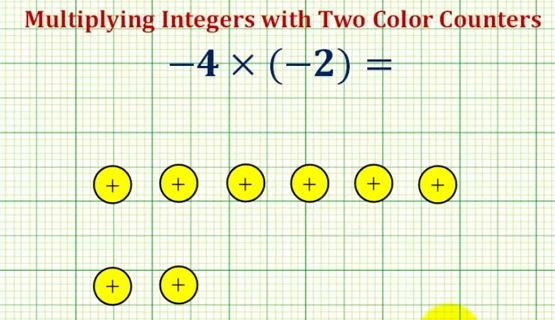One way uses a number line.
|----|----|----|----|----|----|----|----|----|----|----|----|----|----|
-6 -5 -4 -3 -2 -1 0 1 2 3 4 5 6 7 8
Taking a concrete geometrical point of view, short joinable rods made of straws could be used.
A number of rods each of length 1, 2, 3, ... can be made and the following done on a flat page.
From the origin place rods on the number line, either right or left. Given a placed rod we may apply the negative sign to it. The negative sign rotates a rod a half-turn around the origin.
Note: The negative sign "$-$" itself has half-turn rotational symmetry.
Examples:
2 x 3 = 6 : start at the origin with a rod of length 3 and join a second end-to-end.
2 x -3 = -6 : first place the rod to the left so it is length -3 and join a second.
-2 x 3 = -6 means first place the rod of length 3 to the right,
then join a second of these making length 6 to the right,
then apply the negative sign which is a half-turn.
It may be better if eventually this rotation and scaling could be done in one operation.
-2 x -3 = 6 means place the rod to the left so it is length -3,
join a second of these making length -6 to the left,
then apply the negative sign which is a half-turn, ending up 6 to the right!
This would useful later if introducing complex numbers.
By this stage they should be familiar with angles and multiplying pairs of now abstract numbers where there is no difference in type between the first and second number (which doesn't have to represent a quantity from physics like a rod of length 3cm). Studying examples like above, they may see that multiplying pairs of numbers means summing their angles and scaling their lengths.
(They could begin this using 1 and -1, remembering +1 is one to the right and -1 is one to the left.)
It is then quite a puzzle to see where a unit length must be placed from the origin, so that when multiplying it by itself (two equal rotations), it ends up as -1. The number which satisfies this no longer lies on the number line but, is somewhat between -1 and 1 in resemblance, and is called i.





